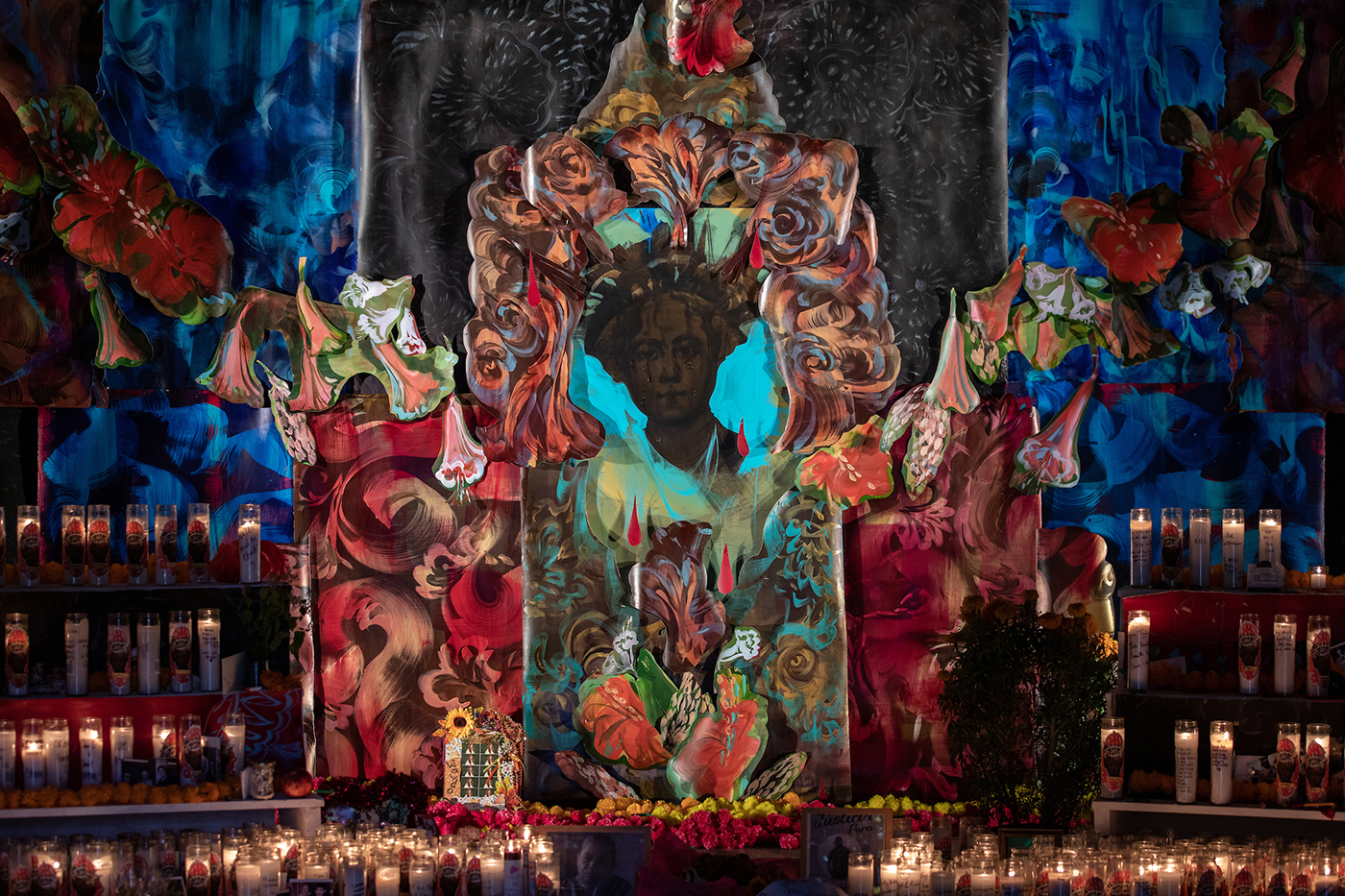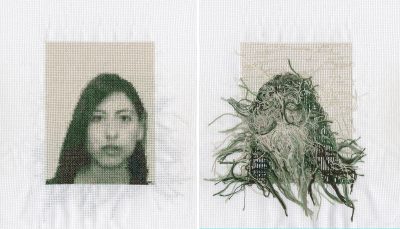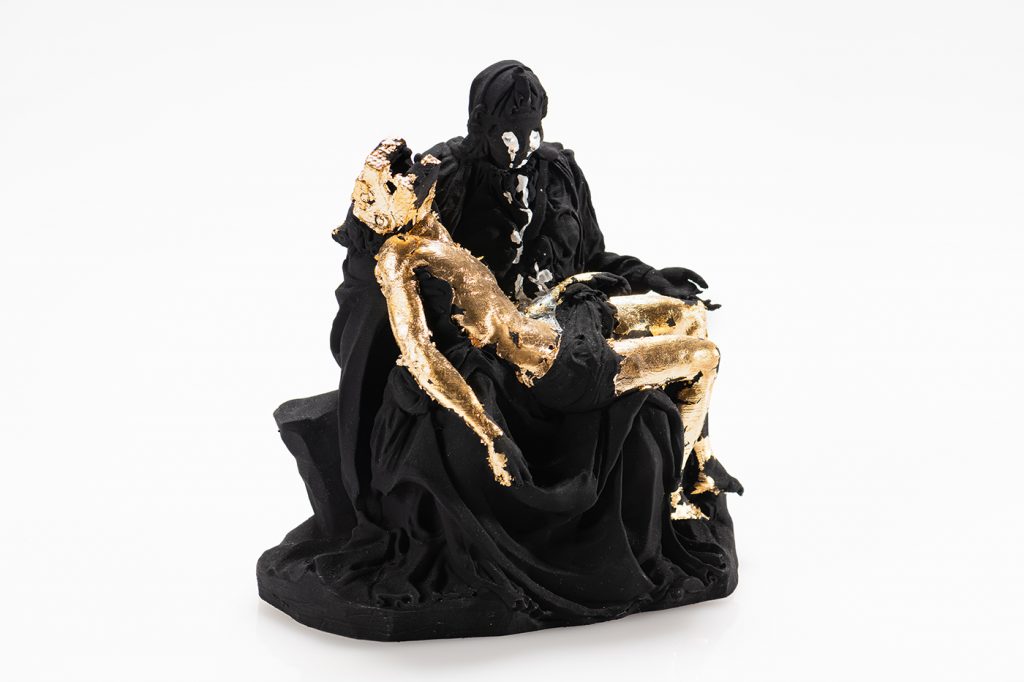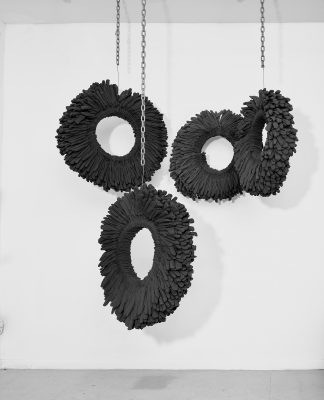
Art as Activism after the Pandemic: Vida, Muerte, Justicia / Life, Death, Justice at Ogden...
Art
A face mask on a POC worker, a crying Statue of Liberty, a woman walking through hurricane debris: Vida, Muerte, Justicia / Life, Death, Justice swirls into your mind in a post-pandemic fog. The timely, powerful group show at Ogden Contemporary Arts and Weber State University’s Shaw Gallery, on display through Nov. 27, centers on the COVID-19 pandemic through the eyes of an all-Latin American/Latinx artist and curatorial lineup. The range of artists includes Guggenheim Fellow Esperanza Cortes and local Founder of Mestizo Institute of Culture and Arts Ruby Chacón. In Vida, Muerte, Justicia visitors view the colorful richness possible when we embrace multicultural society and foreground empathy for those forgotten or dehumanized.
“We’re all going through COVID in the sense of processing our mortality. Everyone has had to go inside and become more aware of these issues.”

“We wanted to open a broad perspective on what it means to be Latin American and what Latinx means,” says Jorge Rojas, one of the Co-Curators and a multidisciplinary artist/educator from Mexico. The variety of media in the show, from video art by Wanda Raimundi-Ortiz to embroidered immigration photos by Nancy Rivera, works congruently with Rojas’ background working with a range of media in an art-as-activism context. “We’re all going through COVID in the sense of processing our mortality. Everyone has had to go inside and become more aware of these issues,” Rojas says. “This is an opportunity for these artists to bring light to the voices that haven’t been heard.”
María del Mar González-González, the second Co-Curator and Assistant Professor of Global Modern and Contemporary Art History at Weber State University, also considers the show a reconsideration of marginalized voices, especially of women, activists and migrants.
del Mar González-González points to one of the show’s pieces, Jaime Trinidad’s “Pieta Mexicana,” a small sculpture in a similar form as Michelangelo’s famous Pietà. “Mary is holding the body of her son, who here has the head of the plumed serpent, Quetzalcoatl,” she says. “The sculpture is shedding gold leaf, which merges the parallel beliefs between the resurrection of Christ and the shedding skin of the serpent. This is a beautiful symbol of hybrid beliefs.”

The varied stories that emerge from Vida, Muerte, Justicia are gut-wrenching, especially the spotlighting of essential workers. Pieces like “Untitled (Orange) from the Latinx Farmworkers” by Lina Puerta show the labor essential to society’s continued functioning. The mix-media piece depicts a farmworker with a face mask and frames the mistreatment during the pandemic. Conceptual sculptor Michael Pribich shows the endless cycle of labor in “Essential.” His sculptures are made of dark brown work gloves strung into metal circles and hung from the ceiling. “I worked with a few different colors of gloves, but in the end I chose darker; it looks somber,” Pribich says. “The cycle goes on and on through generations. Here we can highlight the labor that’s often invisible and considered disposable.”
“The cycle goes on and on through generations. Here we can highlight the labor that’s often invisible and considered disposable.”

Raimundi-Ortiz’s video excerpt of the performance piece EXODUS | PILGRIMAGE shows the devastation following the hurricane in Puerto Rico. It follows her making a flotsam dress on the beach after Hurricane Maria and marching to give a traditional dance performance. Pulitzer photojournalist Carlos Villalon’s portrait of an immigrant woman in “Guna Dule Woman” gives a window into the dangerous journeys of migrants through the jungles of Colombia.
The realities of a global Latin American/Latinx world shines through in Vida, Muerte, Justicia with artists from all walks of life. The conversation about labor, the exploitative realities of capitalism and colonialism, women’s rights and more are foregrounded when framed by culture and identity. This experience proves that our worldview can only be complete when marginalized voices are listened to, and that’s where we can also hear a strain of hope for a more compassionate future. Visit the show at Ogden Contemporary Arts and Weber State University’s Shaw Gallery, 455 25th St., Ogden, until Nov. 27 and on the web: ogdencontemporaryarts.org/vida-muerte-justicia-life-death-justice.
